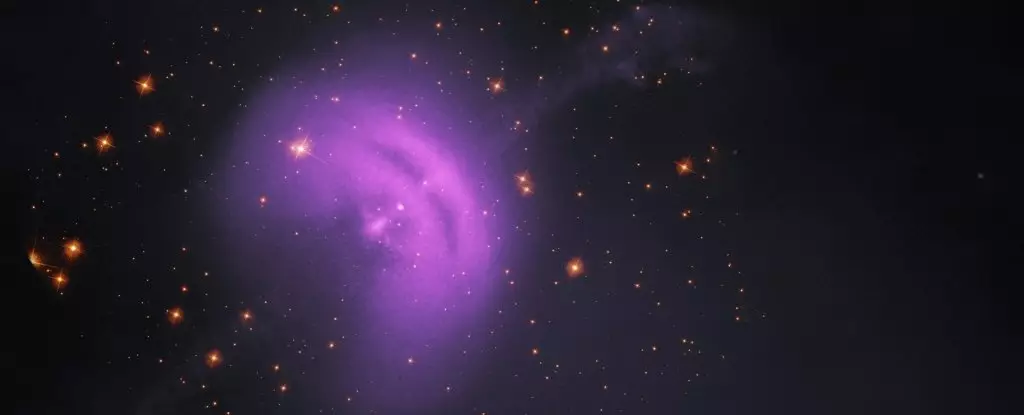Cosmic rays, high-energy particles originating from beyond our atmosphere, continuously bombard Earth. These enigmatic particles predominantly consist of protons, atomic nuclei, and a smaller fraction of electrons and positrons. While most cosmic ray particles are relatively low-energy, recent findings from the H.E.S.S. Observatory in Namibia have revealed an exciting subgroup known as cosmic-ray electrons (CRe), which possess immensely high energies, reaching up to 40 teraelectronvolts (TeV). These energies suggest that these particles emerged from sources quite close to the Solar System, sparking renewed interest in our understanding of the local cosmic environment.
The mechanisms behind cosmic-ray generation remain largely enigmatic. The recent research highlights intriguing possibilities that center on extreme astrophysical objects, such as supernova remnants, black holes, and pulsars. Understanding where and how these particles gain such extraordinary energies can pave the way for a deeper comprehension of phenomena that govern our universe.
Astrophysicist Kathrin Egberts from the University of Potsdam emphasizes the significance of finding that the detected cosmic-ray electrons likely originate from a limited number of cosmic sources within roughly a few thousand light-years of our Solar System. This assertion is critical because it may narrow down a candidate pool of celestial objects that contribute to the production of these remarkable particles. Such precision in identifying potential sources fosters exciting opportunities for future research.
Among the leading contenders are well-known astronomical features, such as the Monogem Ring, a remnant of a supernova, and a Wolf-Rayet star designated γ2 Velorum. Additionally, pulsars like Vela and Geminga could also serve as possible sources. However, another intriguing concept posits that the formidable energies of CRe could stem from a supernova remnant long since faded from our view, reinforcing how much remains unknown about cosmic sources.
Detecting high-energy cosmic-ray electrons is no trivial task. When these particles collide with Earth’s atmosphere, they create an event akin to a sonic boom, known as Cherenkov radiation. This phenomenon occurs when charged particles—like cosmic-ray electrons—travel faster than light in the medium of the atmosphere. The creation of this faint radiation poses a significant challenge in identifying cosmic-ray electrons, primarily because similar emissions result from gamma rays, which are photons rather than charged particles.
Astronomer Mathieu de Naurois highlights the inherent difficulties in distinguishing between the two forms of radiation. While charged particles traverse erratic paths due to their interactions with magnetic fields, gamma rays maintain direct trajectories, thereby facilitating pinpointing their sources. As both types of radiation instigate electromagnetic showers upon entering the atmosphere, discerning CRe from gamma rays is a complex endeavor requiring rigorous data analysis.
Upon scrutinizing data collected at the H.E.S.S. Observatory, researchers identified numerous candidate events for high-energy cosmic-ray electrons. Although it is likely that the list includes some gamma rays, the volume is sufficiently large to draw statistically significant conclusions. The rarity of cosmic-ray electrons with energies exceeding 1 teraelectronvolt (TeV) boosts the importance of the observations made by H.E.S.S.
As CRe dissipate energy rapidly traversing through cosmic distances, it stands to reason that those detected by H.E.S.S. originated from nearby sources. They exhibit a distinct energy spectrum characterized by a sharp drop-off point at approximately 1.17 TeV. According to de Naurois, this sharp transition signifies a limited number of sources responsible for the observed cosmic-ray electrons, contradicting the expectation of a more blended accumulation of contributions from diverse origins.
The research conducted by the H.E.S.S. Observatory serves as a crucial stepping stone toward unlocking the secrets of our cosmic neighborhood. The findings underscore the necessity for continued exploration of high-energy cosmic rays, which, despite their elusiveness, provide invaluable information about the processes energizing our universe.
Future investigations will undoubtedly focus on determining whether a specific directional origin for cosmic-ray electrons exists. Although uncovering such a signature may prove to be a formidable task, the potential insights await. With ongoing advancements in observational technology and methodological approaches, the cosmic landscape stretches out before us, inviting further exploration and discovery.
The exceptional work demonstrated by the H.E.S.S. Observatory not only enhances our understanding of cosmic-ray electrons but establishes a benchmark for future research in this dazzling realm of astrophysics. The quest for knowledge regarding these high-energy particles is far from over; rather, it serves as an invitation for scientists to delve deeper into the universe’s mysteries.

